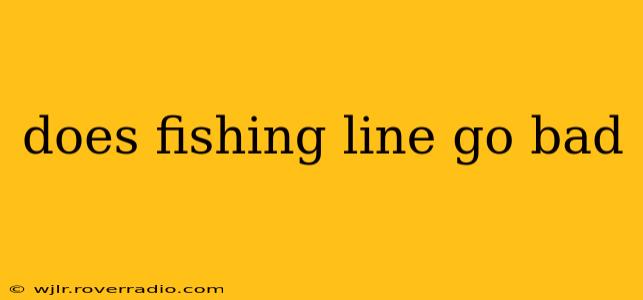Fishing line, that seemingly insignificant strand connecting you to the underwater world, is actually a crucial piece of your angling equipment. But does fishing line go bad? The answer is a resounding yes, although the rate at which it degrades depends on several factors. Understanding how and why fishing line deteriorates is key to maximizing your fishing success and ensuring your safety.
How Does Fishing Line Degrade?
Fishing line, regardless of material (monofilament, fluorocarbon, braided), is susceptible to various forms of degradation. These include:
-
UV Degradation: Sunlight's ultraviolet (UV) rays are the biggest culprit. Prolonged exposure to the sun weakens the line's molecular structure, making it brittle and prone to snapping. This is particularly true for monofilament lines.
-
Exposure to the Elements: Saltwater, freshwater, and even exposure to air can weaken line over time. Saltwater is especially harsh, accelerating the deterioration process significantly.
-
Abrasion: Dragging your line across rocks, snags, or even the boat's hull creates tiny abrasions that compromise its strength. These micro-tears weaken the line, creating weak points that can ultimately lead to breakage.
-
Heat: Extreme temperatures, both hot and cold, can affect the integrity of your fishing line. While not as dramatic as UV degradation, prolonged exposure to significant temperature fluctuations can gradually weaken it.
-
Age: Even in ideal storage conditions, fishing line will degrade over time. The exact timeframe varies depending on the material and storage, but older lines are inherently weaker.
What are the Signs of Bad Fishing Line?
Recognizing when your fishing line has deteriorated is crucial for preventing lost fish and potential safety hazards. Look out for these signs:
- Brittleness: If your line cracks or breaks easily when bent, it's a clear sign of degradation.
- Loss of Elasticity: Good fishing line should have a degree of stretch. If your line feels stiff and inflexible, it's likely compromised.
- Discoloration: Fading or significant discoloration, especially yellowing in monofilament, indicates UV damage.
- Rough Texture: A rough or fuzzy texture along the line's surface suggests abrasion damage.
How Long Does Fishing Line Last?
There's no single definitive answer to how long fishing line lasts. The lifespan depends on several factors, including:
- Type of Line: Monofilament lines generally have a shorter lifespan than fluorocarbon or braided lines.
- Storage: Proper storage in a cool, dark, and dry place significantly extends the line's lifespan.
- Usage: Heavy usage and exposure to harsh conditions will degrade the line faster.
As a general guideline, consider replacing your line at least annually, or more frequently if you notice any of the signs of degradation mentioned above.
How Can I Extend the Life of My Fishing Line?
Taking proactive steps can significantly extend the lifespan of your fishing line:
- Proper Storage: Store your line in a cool, dark, and dry place away from direct sunlight and extreme temperatures.
- Rinse Your Line: After each fishing trip, especially in saltwater, rinse your line thoroughly with fresh water to remove salt and debris.
- Inspect Your Line Regularly: Before each fishing trip, inspect your line for any signs of damage or wear.
- Avoid Abrasion: Be mindful of potential abrasive surfaces when fishing.
Does the Type of Fishing Line Matter?
Yes! Different types of fishing lines have varying degrees of susceptibility to degradation:
- Monofilament: The most common type, monofilament is relatively inexpensive but more susceptible to UV degradation and abrasion.
- Fluorocarbon: A more expensive option, fluorocarbon is less visible underwater and more resistant to abrasion and UV damage.
- Braided Line: Strong and durable, braided line is also more resistant to abrasion but can be more susceptible to cutting damage.
What happens if I use old fishing line?
Using old, degraded fishing line can lead to several problems:
- Broken Lines: The most obvious consequence is unexpected line breakage, leading to lost fish and potentially lost lures or tackle.
- Reduced Sensitivity: Damaged line can be less sensitive to bites, making it harder to detect strikes.
- Safety Hazards: A broken line under tension can present a safety hazard, potentially causing injuries.
In conclusion, while fishing line doesn't have an expiration date stamped on it, understanding its degradation process and taking preventative measures is crucial for successful and safe fishing. Regular inspection, proper storage, and timely replacement are essential for maximizing your angling experience.
